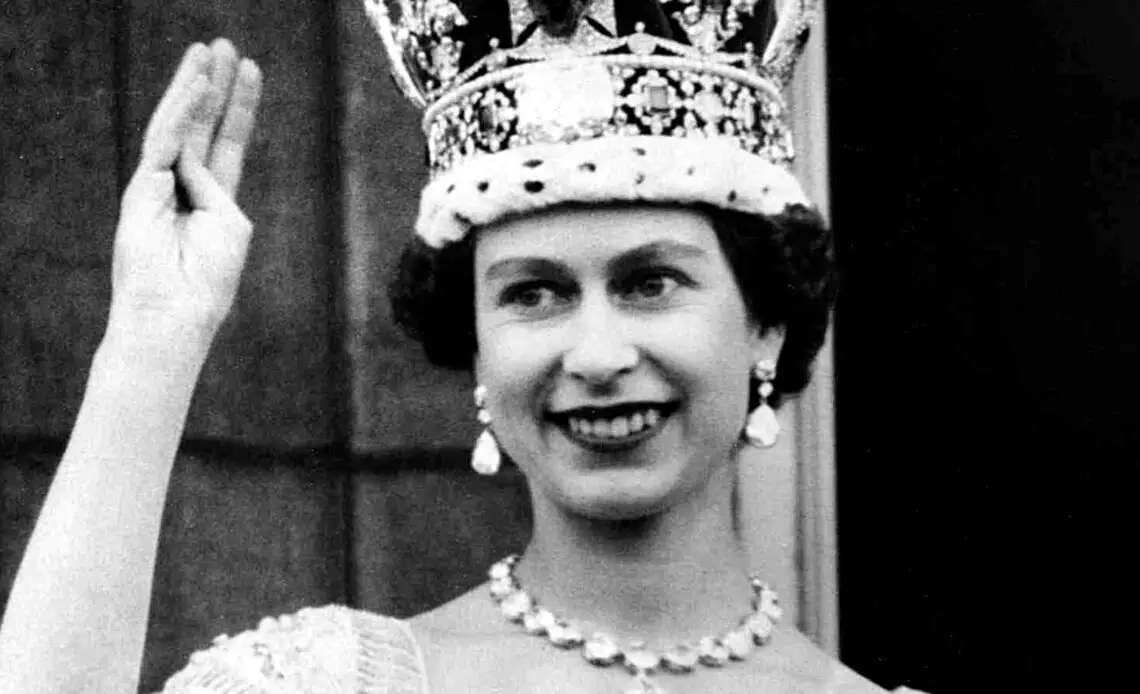
One of the most recognisable and iconic moments in The Queen’s historic 70-year reign was her 1953 Coronation. It was the first televised Coronation and was watched by 27 million people in the United Kingdom, with millions more watching from around the world.
Queen Elizabeth II ascended the throne upon her father’s death on 6 February 1952. King George VI had only reigned for fifteen years before dying of lung cancer at Sandringham. Elizabeth and her husband were on the way to Kenya on a tour that was meant to be carried out by her parents when she was informed in Nairobi of her father’s death.
After the young Queen returned back to London, the first Coronation Commission planning meeting was held in April 1952. At The Queen’s request, Prince Philip chaired the committee. The choice was contested, as traditionally, the Duke of Norfolk oversees coronation preparation in his role as Earl Marshal. However, other subcommittees were formed and chaired by Norfolk, including the Coronation Executive Committee.
The Coronation was set for over a year later, on 2 June 1953, and planning continued throughout the year.
The First Knight of Fashion, Sir Norman Hartnell, was commissioned to design Her Majesty’s gown, as well as those of her Maids of Honour and members of the Royal Family.
Hartnell created nine different designs for The Queen, and the final design included the flowers of the four nations of the United Kingdom, as well as the Commonwealth nations: the Tudor rose for England, the thistle for Scotland, the leek for Wales, the shamrock for Northern Ireland, the maple leaf for Canada, the silver fern for New Zealand, the wattle for Australia, the protea for South Africa, two lotus flowers for India and Ceylon, and wheat, cotton, and jute for Pakistan.
The Royal Family processed through London in state carriages, moving down the Mall, the Pall Mall, St James’s Street, Piccadilly, East Carriage Drive, Oxford Street, Regent Street, Haymarket, Northumberland, and Victoria.
The Queen arrived at Westminster Abbey for the ceremony at 11:00 am and originally needed help walking down the aisle as her Robes of State created a great deal of friction with the carpet lining the aisle.
There were over 8,000 guests in the Abbey to witness Her Majesty’s Coronation, including peers and peeresses from the United Kingdom, representatives from the Commonwealth Nations, and foreign royals.
The ceremony was broadcast by the BBC. Although originally several members of the cabinet were against the idea of televising, including Sir Winston Churchill, but Elizabeth insisted it be televised. The RAF flew copies of the recorded film across the Atlantic to ensure that The Queen’s Canadian subjects would be able to see the Coronation on the same day.
The only portion of the ceremony that was not broadcast was the anointing ritual. After The Queen was proclaimed sovereign by the Archbishop of Canterbury, the bishops and peers swore their loyalty to her. After this, she took communion and then the entire congregation recited the Lord’s Prayer. She then left through the Great West Door of the Abbey.
Queen Elizabeth II reigned for seventy years, until her death on September 8th 2022. She was the longest reigning Monarch in British history. On May 6th 2023, her eldest son is crowned as King Charles III.
"; n.innerHTML = "window._taboola = window._taboola || [];_taboola.push({mode:'thumbnails-a', container:'taboola-below-article-thumbnails', placement:'Below Article Thumbnails', target_type: 'mix'});"; insertAfter(t, e); insertAfter(n, t) }injectWidgetByMarker('tbmarker');

